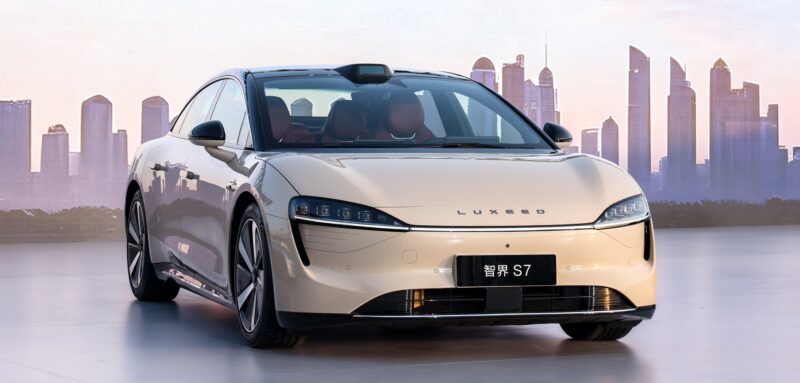Huawei launched Luxeed S7 with 12.4 kWh/100 km consumption and self-parking
The Luxeed S7 electric sedan was launched in China, starting at 249,800 yuan (35,200 USD) and featuring a very low consumption of 12.4 kWh/100km. Thanks to 800V architecture, it can charge 430 km in 15 minutes. It features Huawei’s ADS 2.0 self-driving package, which also supports a self-parking function.

Luxeed is the new brand under Huawei, and cars are manufactured by their joint partner Chery Auto, which also provides the EV platform. It is Huawei’s second auto brand after Aito. The S7 is Luxeed’s first car.
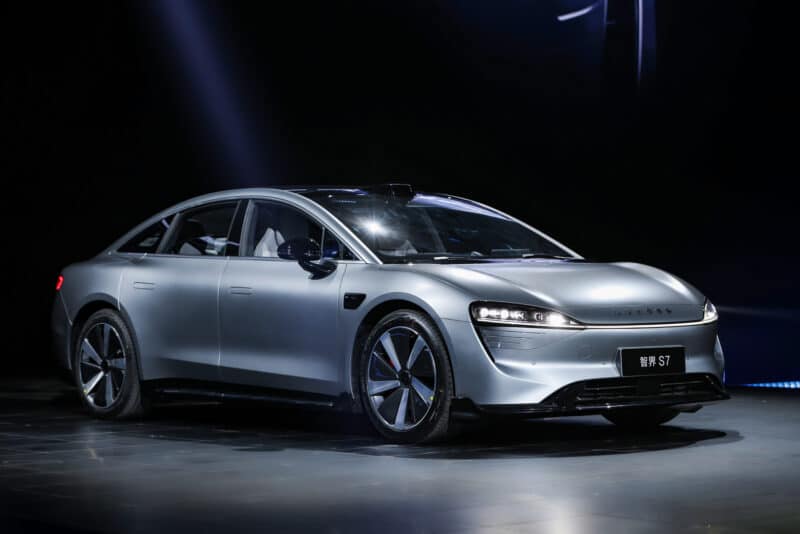
S7 supports 800V charging and sits on Chery’s E0X platform, which underpins Exeed Sterra ES and Exeed Sterra ET. It is a full-sized sedan with dimensions of 4971/1963/1474 mm and a wheelbase of 2950 mm. It packs many sensors, including one lidar, three millimeter-wave radars, 12 ultrasonic radars, and 11 high-definition cameras, all to supply input into the Huawei ADS 2.0 (Autonomous Driving System 2.0).
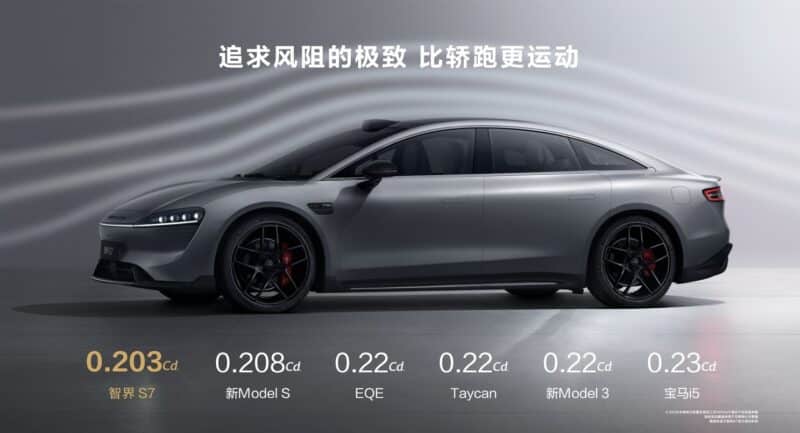
S7 has excellent aerodynamics, featuring a drag coefficient of 0.203 Cd, which beats even the Tesla Model S. The maximum range is 855 km under CLTC conditions. The top trim level with dual motors and 365 kW of power (front pmotor150 kW, rear 215 kW) can do 0-100 km/h in 3.3 seconds. In the opposite direction, the 100-0 km/h braking distance is 33.5 meters.
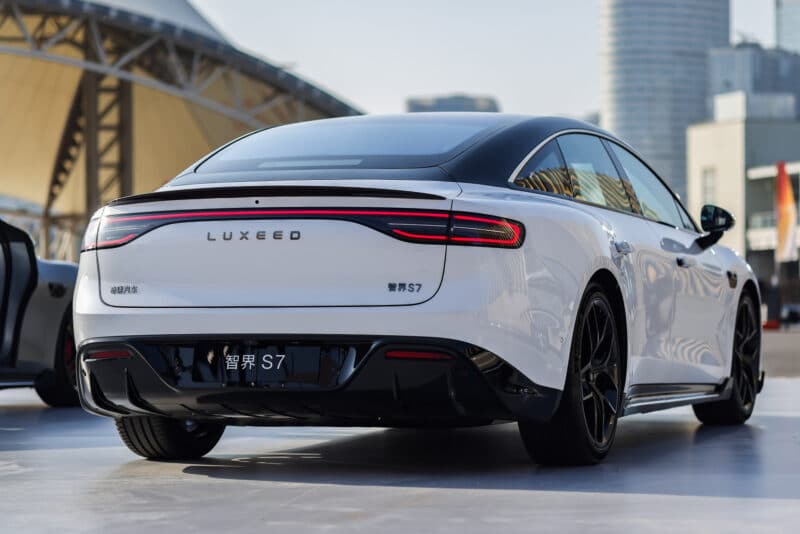
CATL supplies the battery and the chemistry is LFP for the entry-level model, NMC ternary for the Max+ Long Range model and mixed for the rest. There are three capacity options: 62 kWh, 82 kWh, and 100 kWh. Huawei claims the S7’s battery can charge 215 km in 5 minutes.
The S7 comes in four trims:
- Pro
- 249,800 yuan (35,200 USD)
- 215 kW, RWD
- 62 kWh LFP, good for 550 km CLTC range
- Max
- 289,800 yuan (40,800 USD)
- 215 kW, RWD
- 82 kWh M3P (NMC+LFP), good for 705 km CLTC range
- Max+
- 319,800 yuan (45,000 USD)
- 215 kW, RWD
- 100 kWh NMC, good for 855 km CLTC range
- Max RS
- 349,8000 yuan (49,300 USD)
- 365 kW dual motor, AWD
- 82 kWh M3P (NMC+LFP), good for 630 km CLTC range
The S7 is the first model developed under Huawei’s Smart Choice scheme, where the Chinese phone maker acts as a 0.5-tier supplier and a seller. The Luxeed EVs will be offered in Huawei’s flagship stores around China.

The S7 has lots of Huawei tech inside, including hardware and software. On the HW side, the DriveOne powertrain integrates the motor control unit (MCU), motor, and reducer. On the software side, it is a high-level autonomous driving package ADS 2.0 and the HarmonyOS 4 cockpit system.
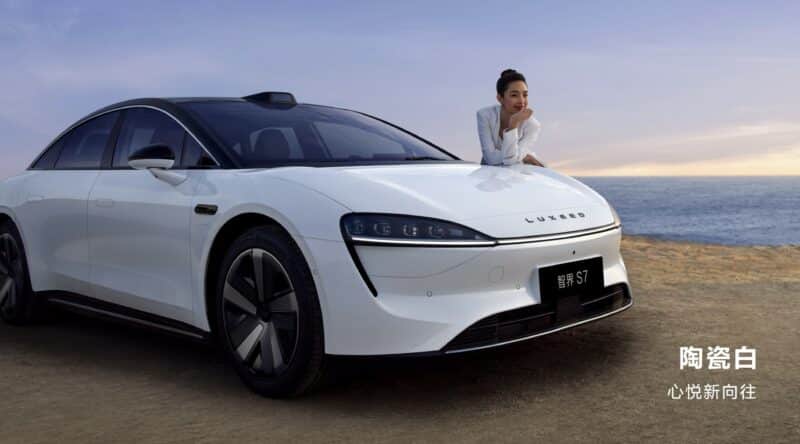
During the launch conference, Huawei also claimed that the city NCA (Navigation Cruise Assist) will be available in the whole of China by the year’s end. NCA is Tesla FSD-like driving software available under the Huawei ADS Package. Huawei also claims that the Parking Valet function will open in 7 major cities in early 2024.
Luxeed S7 started pre-orders On November 9 and received over 20,000 orders in less than three weeks. Customers who order the car before December 31 will receive 55,000 yuan (7,800 USD) worth of benefits from Huawei, indicating that Huawei is serious about its end-of-year sales push and price war escalation, which started with Aito M7 in September.
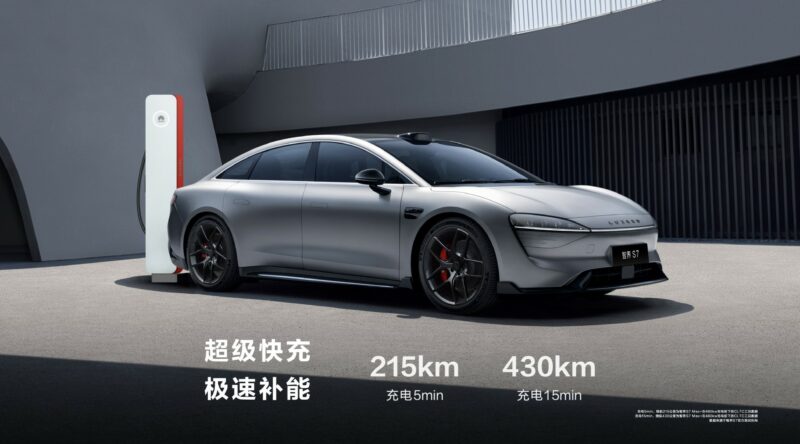
Huawei also announced that in 2024, it plans to build over 100,000 Huawei 600 kW superchargers in China.
Editor’s comment
Luxeed S7 is Huawei’s oil added into 200k – 300k electric sedan segment in China. The Nio ET5, BYD Seal, Tesla Model 3, VW ID.7 and Zeekr 007 will feel even more pressure now, considering Huawei has a lot to offer in terms of software and ADAS and will push the S7 through all its marketing channels and physical stores. And even if this doesn’t work, Huawei has already proved it is not afraid to use its deep pockets and go all-in into a price war.



